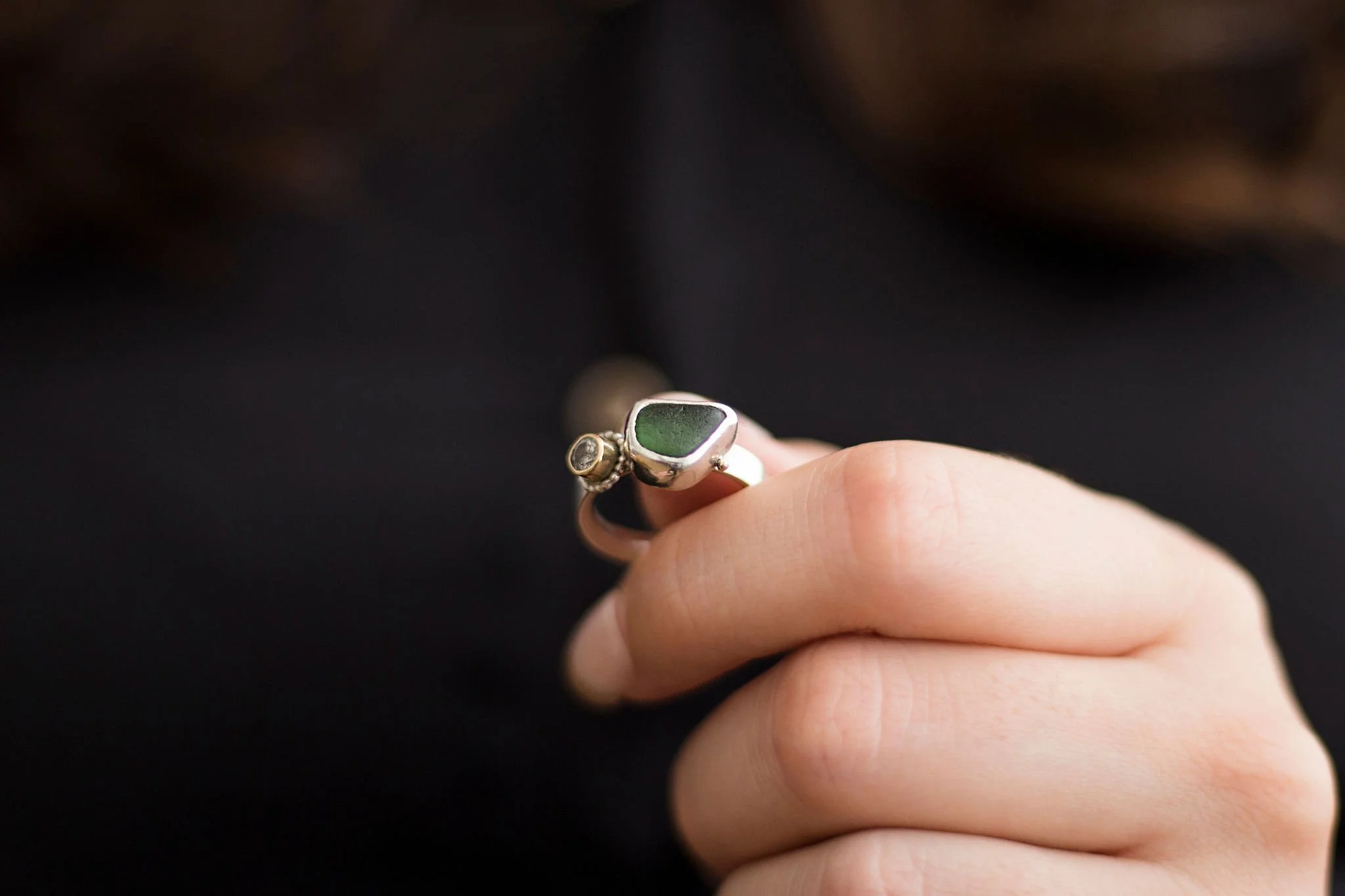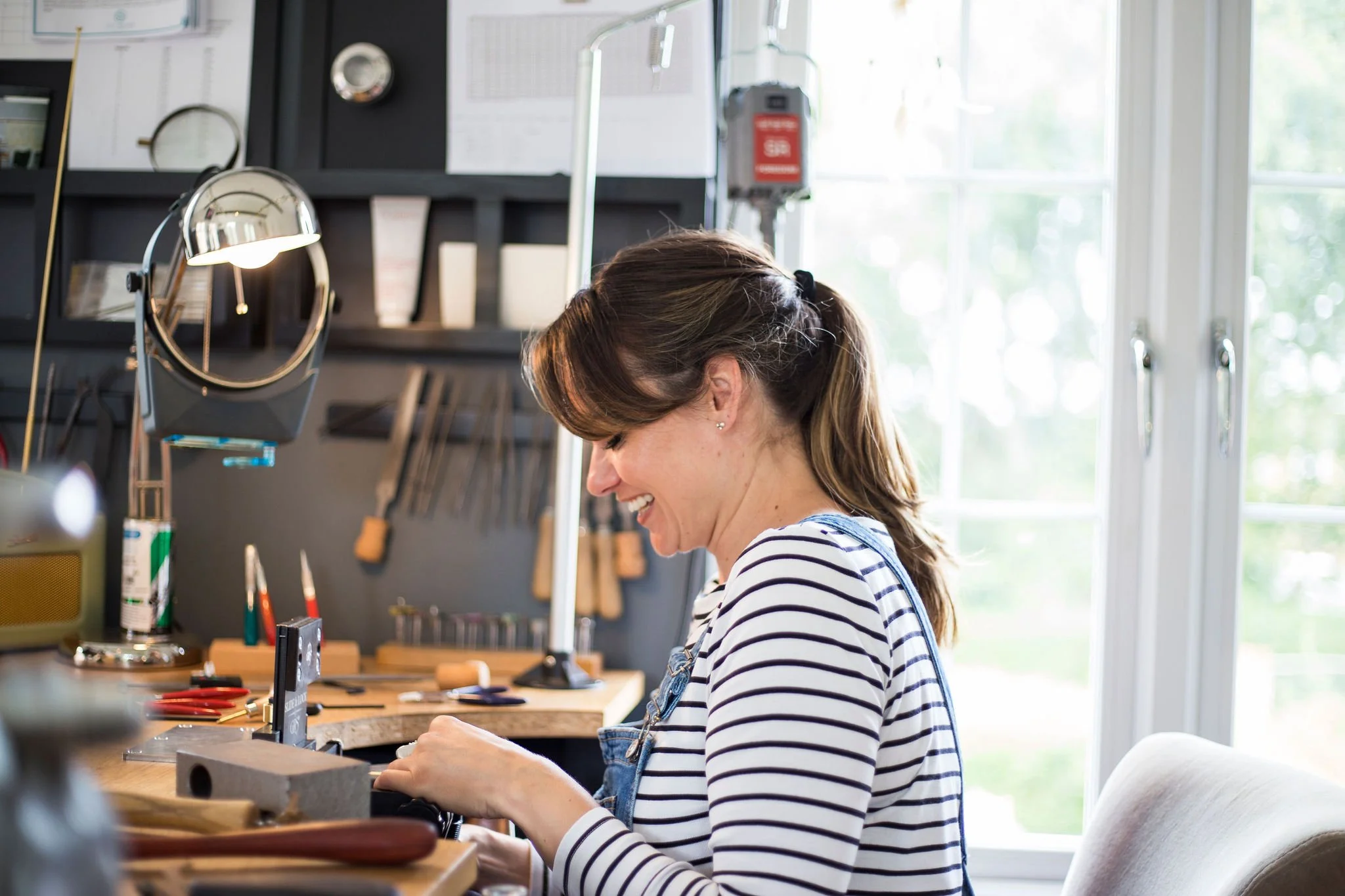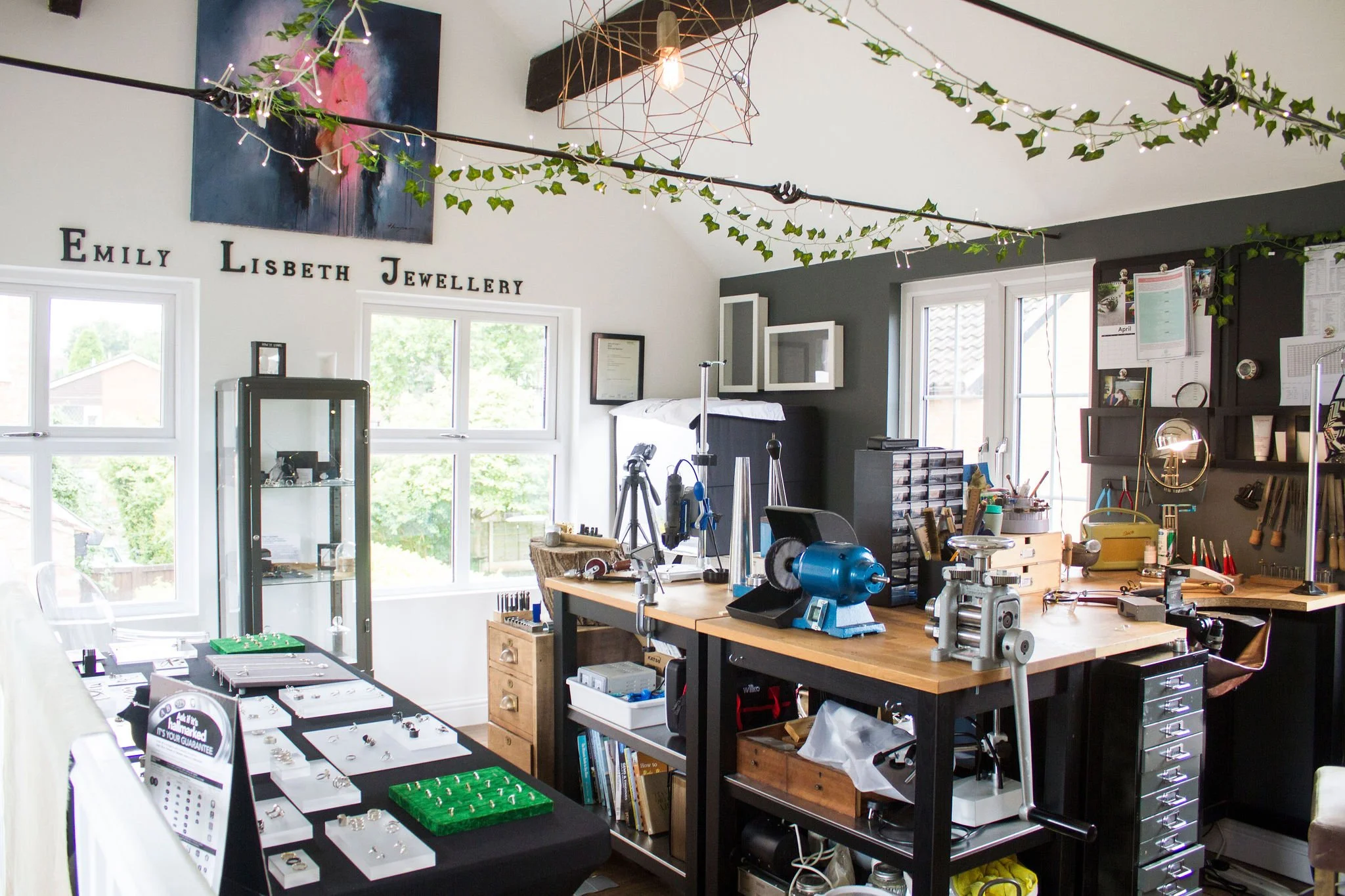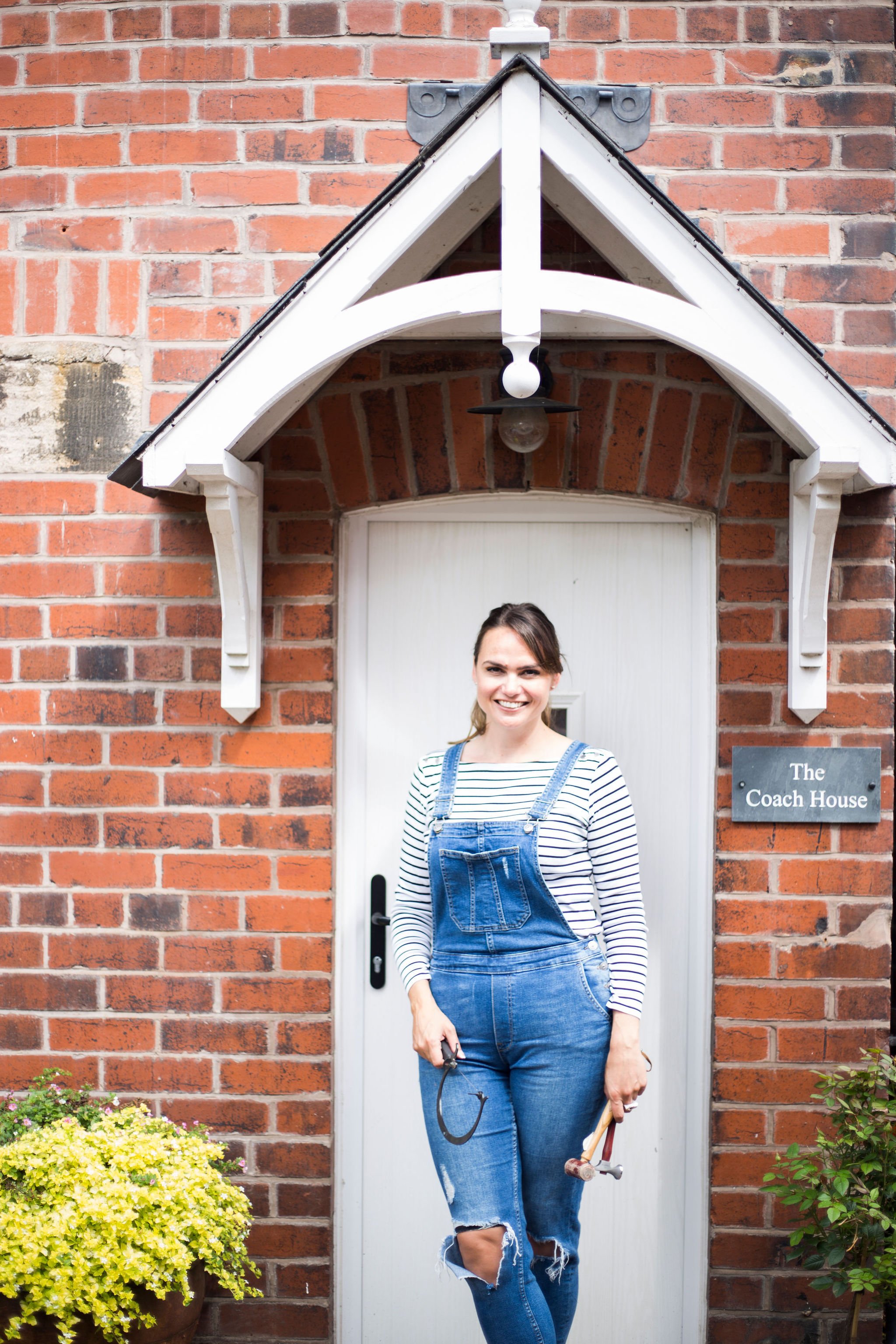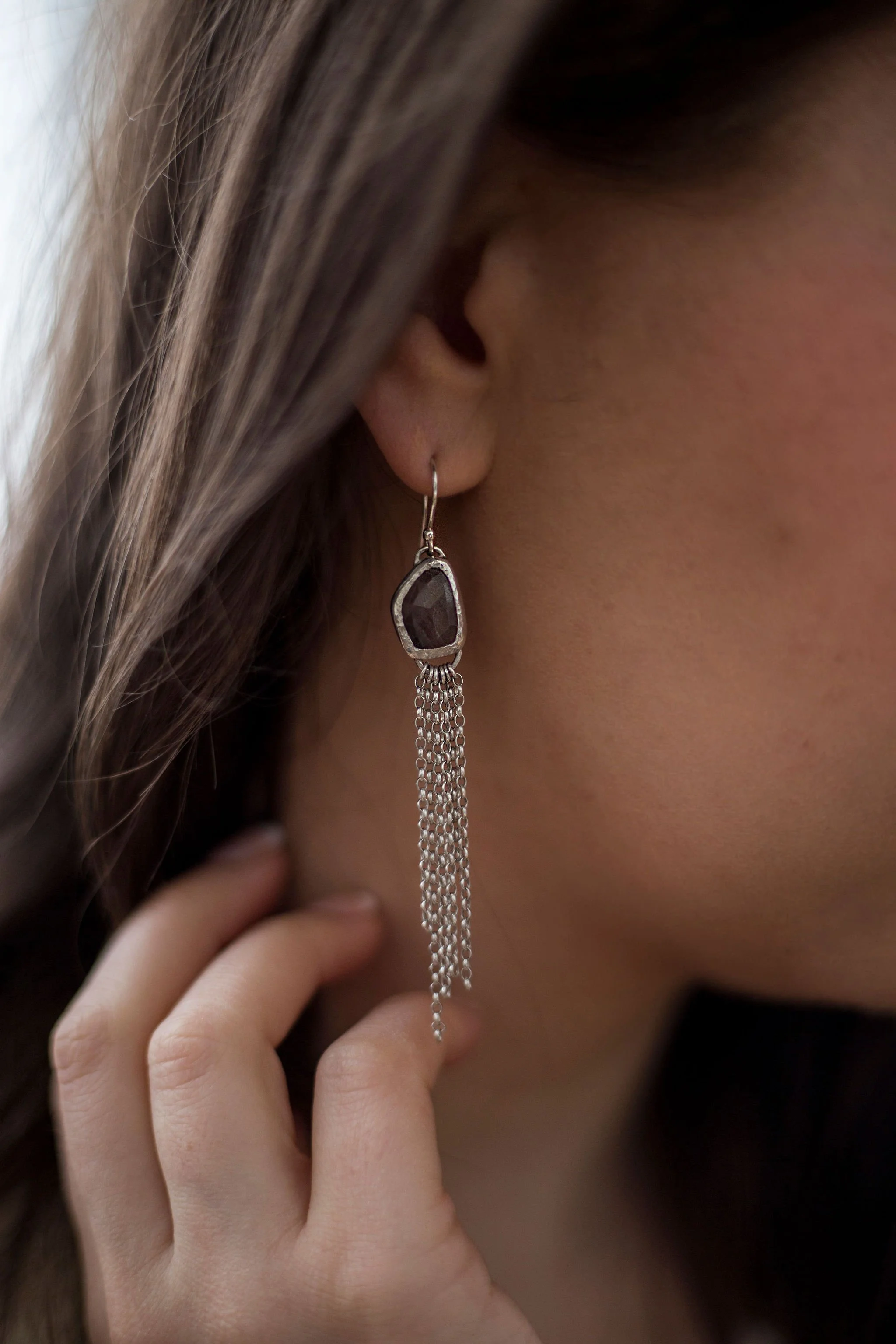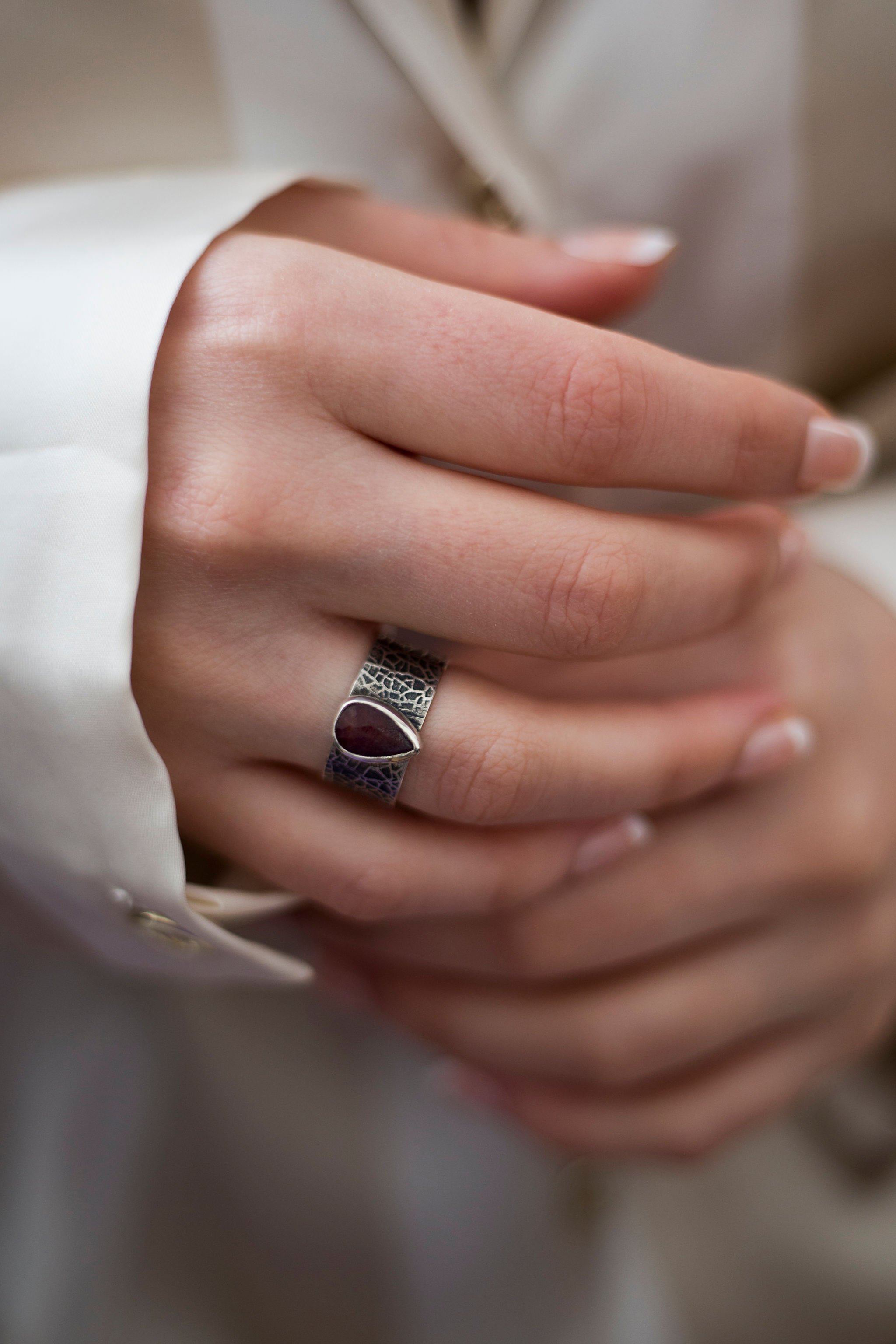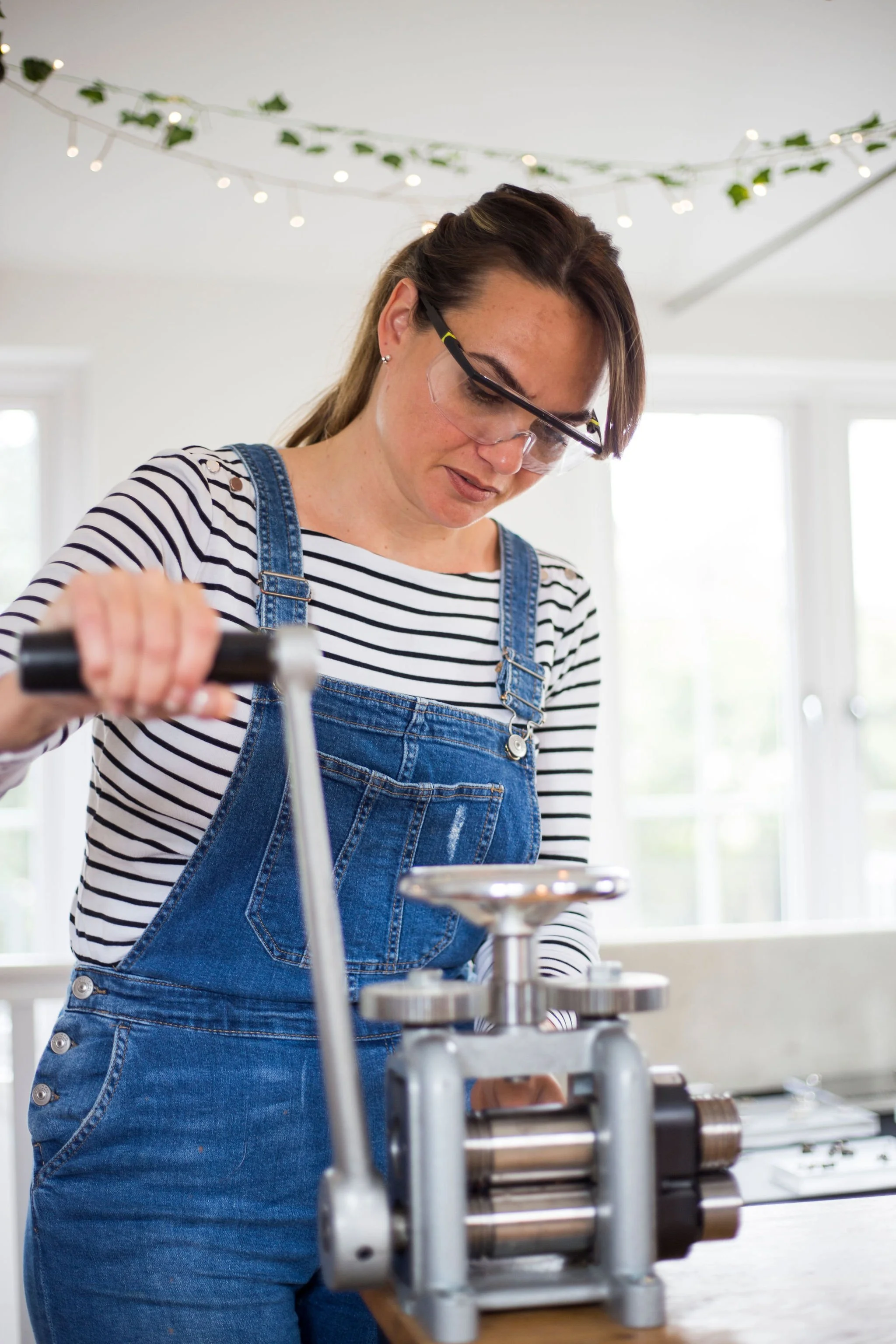Award-winning and passionately sustainable: Meet Emily of Emily Lisbeth Jewellery
I’ve worked with Emily a few times now, printing business cards, thank you notes, and, most recently, jewellery presentation cards. From blind debossing to plantable seed paper, Emily’s been eager to try something a little bit different when it comes to her stationery, but always with a focus on sustainability.
Emily, tell us a bit about your business and what you do!
I'm a jewellery designer/maker specialising in bespoke one-of-a-kind pieces using recycled silver, gold and gemstones. I design and handcraft jewellery using traditional silversmith and goldsmith techniques along with some more experimental processes.
How did you get started as a jeweller?
I had a very similar story to you! I was made redundant twice by my mid-twenties and that second one got me down. I couldn't handle the emotional turmoil and uncertainty of my life being in someone else's hands and decided there and then I would retrain in something that couldn't be taken away from me. I needed a physical skill that whatever happened I would be able to generate some revenue from, so in 2009 I completed a 2 year BTEC in jewellery and Applied Arts at the local Manchester college, alongside working admin jobs. Since then I've never stopped learning and have recently completed two further diplomas in Fine Jewellery and Advanced Jewellery with the Jewellers Academy.
What inspired you to take the leap to launch your business, and how does it feel to be your own boss?
Taking the leap was pretty easy and risk-free. I had just had a baby and the cost of a full-time nursery would have been more than my admin salary so it was a no-brainer. I had a decent hoard of tools from my college days and we'd bought a new house with a coach house in the garden perfect to work from so I didn't have any initial set-up costs. It certainly hasn't been easy juggling a little one with running a business, but as soon as he started school it got infinitely easier as I became able to commit more to my business.
Being your own boss can be exciting and terrifying in equal measure. I love what I do so much that self-motivation isn't a problem, but sometimes if there's something I don't know how to do (like building a website) procrastination can set in. I have to wear all the hats and until very recently I didn't outsource anything! I was a designer, maker, photographer, copywriter, blog writer, social media marketer, accountant and salesperson. All alongside doing further training and diplomas, trying to build a website, coaching courses and research. It all got a bit overwhelming and I was close to burnout so I've structured the way I work better now and outsource the bits that aren't my skill set.
“Being your own boss can be exciting and terrifying in equal measure. I love what I do so much that self-motivation isn't a problem, but sometimes if there's something I don't know how to do procrastination can set in.”
What does a typical work day look like in your lovely studio?
It can vary week by week. Any orders that have come via my website or Etsy are prioritised over everything else as I like to keep lead times as short as possible. I generally spend the morning making and doing some product photography whilst the light is good, and then in the afternoon I create social media content, plan collection launches and do general admin.
I've started creating just a few collection launches a year which has given more structure to my business. A collection can take 3-4 months to create, then I need to work backwards to ensure I have enough time for the outsourced jobs like hallmarking, professional photography and uploading to the website.
There are also blog posts and newsletters to write, alongside social media posts. I have also recently taken on a new part-time student support role within the Jewellers Academy which will take some time away from the workshop so going forward I plan on keeping Monday's and Friday solely as making days.
How would you describe your style? Are there any particular themes that inspire your work?
I would describe it as timeless with a contemporary twist. I wanted to create for women like me, who prefer their statement jewellery a little more understated, something subtly unique that they can wear for years to come. My jewellery is designed to empower the wearer and can add confidence, becoming an extension of them. It's not about mass-produced fashion. Who wants to walk into a party with others wearing the same designer necklace anyway? I'm currently big into salt and pepper gemstones. These are highly included gemstones like diamonds and aquamarines that would historically have been discarded for their less-than-perfect appearance. To me those gemstones aren't flawed, they're perfectly imperfect, just like the rest of us.
I know you share my passion for sustainability. How does that look in your creative process and your business?
I'm all about slow fashion and feel strongly that in this throw-away world we live in, it's important that collectively we consume more consciously. It's a constant balancing act of running a business, which essentially depends on people buying from me, with trying to not contribute to waste and encourage mindless purchasing.
My pieces are handcrafted using recycled solid silver and gold, designed to last forever to become heirloom jewellery. The bonus here is your great-granddaughter may choose to have it melted down and reworked into something more to her taste in years to come which is not something you can do with plated jewellery!
My values extend to not only the way I run my workshop but also the packaging which is eco. My beautiful handcrafted wooden boxes are made from a solid piece of walnut from sustainable forests and managed to ensure the biodiversity of the surrounding area. My beautiful letterpress stationery on wildflower paper is the perfect finishing touch.
This or that?
Early bird or night owl?
Biscuit or cake?
Tv show or movie?
City or country?
Night in or night out?
Vintage or modern?
Sunrise or sunset?
Buy it or DIY it?
Coffee or tea?
Podcast or playlist?
Why did letterpress printing feel like the right choice for your stationery and what do you feel it brings to your brand identity?
Over the years I've invested heavily in other areas of my business but I was always a little embarrassed by my business cards. I'd designed them cheaply online and told myself 'people probably just chuck them anyway'. That may still be true, but the initial feeling of quality my letterpress cards give elevates my packaging and now fits my brand better. It's the first thing people see when they open up a package from Emily Lisbeth Jewellery and I think it hints at the quality of the jewellery within and sets the right tone. Since then I've slowly added more letterpress stationery like care cards, thank you cards and presentation cards.
What’s your biggest challenge so far, and how have you tackled that?
My biggest challenge has been finding my niche. When you're creative it can be hard to pin yourself down to a style but it's important to be known for something. One day I might be drawn to working in high-end 18ct gold and diamonds, and then the next day I'm setting sea glass into sterling silver. It can be confusing for the audience so my overriding plan for this year is to narrow down my offering.
And your proudest moment or favourite work?
I've had a few amazing stand-out moments in 2023. One was winning the Jewel fund which is a £2,000 cash investment in my business and 1-2-1 coaching, and the second was being accepted on to the Great Northern Contemporary Craft Fair in Manchester. It's notoriously hard to get onto and being accepted propelled my business.
Any tips for others who might be starting their creative business journey?
My biggest tip is don't compare your beginning to someone else's middle, we all start somewhere. Don't judge yourself against your peers on social media, comparison is the thief of joy (remember they're only showing the best bits). Stay in your own lane, be authentic and your people will find you.
What’s next for Emily Lisbeth Jewellery?
Hopefully more wedding and bridal jewellery. There's nothing more rewarding than when someone chooses you to design and make something as special as wedding jewellery so more of that please!
And finally, if people want to learn more about your beautiful jewellery, where can they find you online?
I'm on Instagram and Facebook daily (@emilylisbethjewellery) and my website is www.emilylisbethjewellery.co.uk


